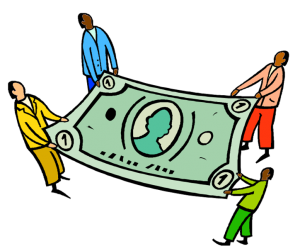 Wait a minute. What crash?! No need for panic. I am absolutely NOT saying a crash is right around the corner. But big, scary declines are standard market events that happen, on average, about once a decade. This week is almost exactly the eighth anniversary of the end of the stock market crash of 2008-09. It’s just common sense to ask yourself from time to time how well prepared you are for the next one. Let’s take that opportunity right now and look at the bright side for some benefits.
Wait a minute. What crash?! No need for panic. I am absolutely NOT saying a crash is right around the corner. But big, scary declines are standard market events that happen, on average, about once a decade. This week is almost exactly the eighth anniversary of the end of the stock market crash of 2008-09. It’s just common sense to ask yourself from time to time how well prepared you are for the next one. Let’s take that opportunity right now and look at the bright side for some benefits.
Four crash-tested benefits
In a financial panic, it’s often overlooked what the financial benefits are. There are four quick ones.
You get to buy at once-in-a-generation low prices like 676 on the S&P 500 and 6503 on the Dow in 2009 compared to 2360 and 20860 today. You can have high annual returns for a long time afterward, like 15% per year compounded for eight years in the examples above. That includes dividends. You get bragging rights; you get to tell people ‘I bought the Dow AND the S&P 500 at the bottom’. More later on how you actually do it automatically. Lastly, you get to feel smart about keeping yourself risk constant while most investors are zigzagging like scared rabbits.
What is a crash?
First of all, what do we really mean by a crash? Here’s what we’re talking about:
You won’t see it coming (Black Swan).
It happens in a major market (Russia is not a major market). And it’s not just a stock thing. Bonds can crash. Real estate, currencies and commodities can too.
It’s a big downer. -10% is a correction. -20% is a bear market. -35 to -60% is a crash.
Also, a crash also has to last for awhile. We’re not talking about a computer generated 15 minute “flashcrash.”
Crashes I have invested through include 1981 in US stocks and bonds; October 19th, 1987 in US stocks; 1994 in US bonds; 2001-2004 when the internet bubble popped in US stocks; the 9/11 geopolitical terror that caused stocks to sink and bonds and real estate to surge; and the September 2008 Lehman bankruptcy triggering a plunge in global stocks.
What to do during and after a crash
You may be tempted to do much more than this, but here are five steps to keep you on track and moving forward.
Remember that diversification by time, type and geography are your best friends. When one kind of security craters, another may be going straight up.
Stay risk-constant by rebalancing as markets throw you way out of line. That means if stocks tank, rebalance by selling other asset classes and buying more stock. This practice ensures you will be buying on the way down and at the bottom (‘bragging rights’).
Harvest and stockpile tax losses, and there can be plenty of them. They can be carried forward to future years, so harvest heartily.
Practice patience; it took 17 months to get through the 2008-09 crash.
Lengthen your horizon. Long term thinking and action are valuable during a crisis.
What to do now before the next crash
The idea is not to make any emotion-based decisions during a crash, so you need your strategy in place ahead of time. Max and I have done the following for all Osbon clients, so they are as prepared as possible for a crash. We fully discuss these questions through a combination of meetings, telephone conversations and emails over time.
- Are my investments consistent with my goals?
- Can my lifestyle comfortably withstand a crash so I’m not forced to sell at market lows?
- Are my rules written down somewhere?
- How will I have the patience to get through it?
- Have I had all my crash-related questions answered before one happens?
- Do I have comprehensive reporting of all assets and accounts, regardless of investment location?
- Are my assets held at an independent custodian?
- Have I read the Osbon article Market timeless, not market timing About “how to get through it” using actual results?
What NOT to do
There are also very bad behaviors that can turn a market crash into a personal financial catastrophe. These beliefs and actions are quite common in the heat and chaos of a crash, and very dangerous to your financial health. Three of them are 1) believing you can predict an unknowable future by trying to time the market or pick stocks 2) skewing your investments in preparation for something that may not happen for a very long time, if ever, and 3) positioning yourself to benefit from consequences that may not happen no matter how plausible they sound.
Remember, never take investment advice from someone who predicts the future. That includes fortune tellers, grandma, and others.
Short term pain, long term brain and gain
Crashes are ugly, brutal, nasty and can create anxiety. Moreover, the social and human cost of crashes is significant and is not to be ignored or downplayed. In this article, we are only talking about financial implications. A crash in some major market should be expected — someday — but not feared. By following the steps above – before, during and after – you can get beyond a crash in better shape than you entered it. I’ve done it six times in my investment career so far.
John Osbon – josbon@osboncapital.com
Weekly Articles by Osbon Capital Management:
"*" indicates required fields
